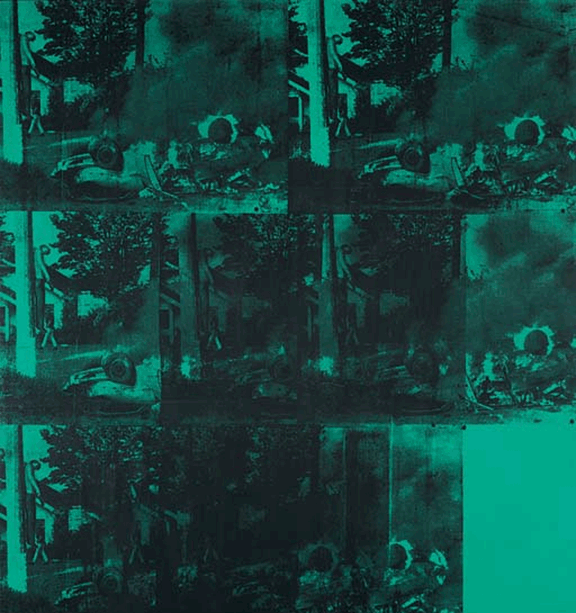After 16 pages of exhibit advertisements, I've come to the Table of Contents. This issue contains two articles about Warhol, one entitled "The Brillo-Box Scandal", an article about Phoebe Washington's art, and an article about James Rosenquist's new memoir. Because this journal seems a lot more user friendly than Art Journal, I'm going to continue to leaf through instead of turning directly to a specific article. Plus, I want to see more of the exhibit ads! I've now seen 20 more pages of ads and have been convinced of the fact that I must be missing out by not being in New York to see these exhibits. I've also arrived at the first text of the article and can tell once again that this journal is a lot more casual and relaxed than Art Journal because the brief article is about filmmaker Tim Burton and is written in a rather easy-going manner, which is nice to see. I'm also learning that beyond his films, Burton also creates paintings and sketches, that he once kept private, but is now showing. Now I'm continuing to look through the journal.
I'm definitely enjoying ARTnews more than I enjoyed Art Journal, though I did enjoy reading the articles in Art Journal. I'm just seeing more and more with each page I turn that ARTnews is less dense and therefore seems more accessible to those whose forte is not Art History. In fact, ARTnews is something that I would read outside of class, especially if I lived in a large city with an active art scene. It seems like a veritable guide to the exciting new exhibits, a magazine that informs you of the hot spots in the art world, but in a way that is encouraging and not too overwhelming. I also like that there are non-scholarly articles, such as a one-page piece about a New Yorker who is bringing museum culture to Qatar. And as I'm getting further into the magazine, I'm noticing that the locations of the exhibits being advertised range from Wyoming to Colorado to Florida. So it's possible that there could be something in here for all readers.
Overall, what I like is that the articles are brief and easy to read, and that these articles are interspersed with exhibit advertisements throughout the issue. There is also a section of book reviews so that one can be led to further reading if interested. Now I've come to the cover feature, entitled "Warhol Inc." It's pretty lengthy, but a great deal shorter than the articles I read in Art Journal. I'm going to go ahead and read it because our study of Warhol's art in class was very interesting. A quote in the article (from Tom Sokolowski of the Andy Warhol Museum) that I really like is this: "He [Warhol]...became the one who told the world how to become cool." And this definitely seems to be the case considering what the article teaches the reader about the sale of Warhol-edition Campbell soup cans for $2 a pack in rural Pennsylvania and Ohio in 2004, and for $48 a pack at Barneys in New York in 2006. This disparity is apparently due to Warhol's ability to appeal to both the low culture and the high culture. And since his death in 1987, people who belong to this high culture have paid millions of dollars (per painting) for his works. The article states that Warhol is most likely the biggest market in contemporary art, and not just in terms of dollars. His face and images are also everywhere: candy, clothing, porcelain, glass, perfume, watches, rugs, jewelry, and condoms. The article is finished perfectly with a quote from one of Warhol's friends who said, "He [Warhol] has energy still. He's just, you know, still alive."
 Green Car Crash (Green Burning Car I) (1963), which sold for $71.7 million in 2007
Green Car Crash (Green Burning Car I) (1963), which sold for $71.7 million in 2007 New York fragrance company Bond No. 9's Andy Warhol Success is a Job in New York perfume, which is priced at $220 for 100 milliliters
New York fragrance company Bond No. 9's Andy Warhol Success is a Job in New York perfume, which is priced at $220 for 100 millilitersIn general, I've very much enjoyed reading ARTnews and remarking on the differences between its structure and composition and that of Art Journal. I wonder which journal I'll pick up for my next entry!
Kinsella, Eileen. "Warhol Inc." ARTnews 108 (2009): 86-93.
Kinsella, Eileen. "Warhol Inc." ARTnews 108 (2009): 86-93.

No comments:
Post a Comment